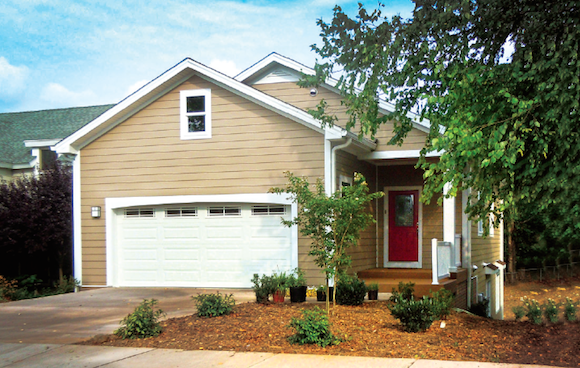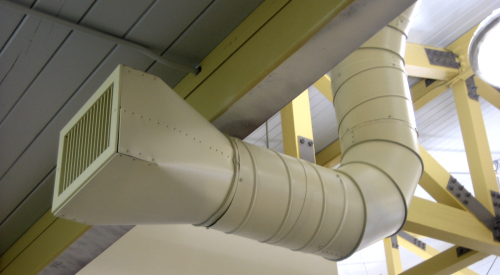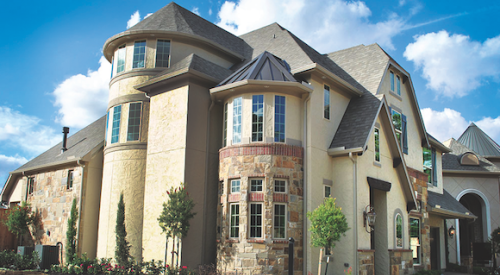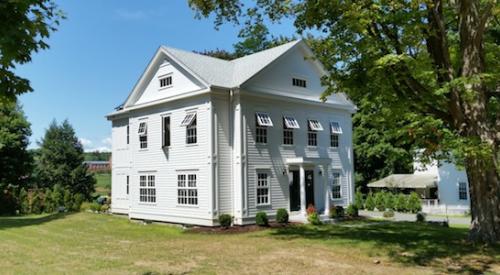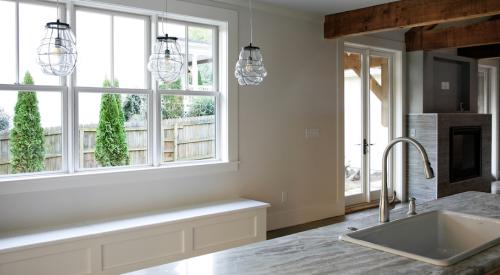Recent retirees Bob Gross and Jean Shepard bought a brand new home five years ago in Charlottesville, Va. Although the house was built to code, it was drafty and uncomfortable, so the couple decided to move on to a custom-built, high-performance home constructed by an Energy Department Zero Energy-Ready Home Program certified builder.
Their new 2,572-square-foot neo-traditional home may look ordinary on its sloped lot in a 1990s-era development near the center of town, but inside, the builder has incorporated a host of quality construction and high-performance details that mark the home as one of the most energy-efficient new houses in the country. So efficient, in fact, that it reduces energy bills by an estimated $1,600 each year, compared with a code-built home. The house also exceeds the couple’s expectations for attaining indoor comfort and air quality.
To be certified as a DOE Zero Energy Ready Home, a home must meet or exceed all of the energy, durability, and HVAC requirements of Energy Star Certified Homes Version 3.0, the insulation requirements of the 2012 International Energy Conservation Code (IECC), and the indoor air quality and water-saving requirements of the U.S. Environmental Protection Agency’s Indoor AirPlus and WaterSense programs. The home achieved a Home Energy Rating System (HERS) score of 33, without solar photovoltaic (PV) panels included, which is remarkably low considering that the typical average home built to the 2009 IECC would achieve a HERS score of 85.
The builder noted that a 5 kilowatt PV system on the roof would get the home to a true net zero energy rating, that is, a home that produces as much power in a year as it consumes.
Find out more details about this home and others that have been awarded DOE’s Housing Innovation Awards for excellence in building Zero Energy Ready Homes, visit.

The homeowners simply wanted a more comfortable home, but what they got was a home so energy efficient that it will reduce their energy bills by an estimated $1,600 per year compared with a code-built home, and with indoor comfort and air quality far exceeding even their high hopes.

Promethean Homes built in energy efficiency from the ground up, putting 4 inches of rigid foam under the basement slab and wrapping the sides in two more inches of the high-density foam.

Rigid mineral wool board insulation was installed over housewrap and plywood on the 2x6 advanced framed walls of the house, which is Promethean Homes’ first DOE Zero Energy Ready–certified home. Furring strips over the water- and bug-resistant mineral wool boards provide a drainage plane and air gap between the walls and fiber-cement cladding.
Key Features
• Walls: 2x6 advanced framed; R-21 cellulose insulation in stud cavity; plywood sheathing, housewrap, 2 inches rigid mineral wool insulation, 1x4 vertical furring strips for ventilation gap; fiber-cement siding
• Roof: vented attic with 23 inches (R-70) blown cellulose on ceiling deck; 2x10 rafters; rigid plywood air barrier at attic floor; asphalt shingles; rubber flashing boots around pipes
• Foundation: poured concrete foundation and stem walls; 2 inches (R-8) high-density EPS rigid foam on inside of stem wall; 4 inches aggregate plus 4 inches high-density rigid EPS (R-16) plus plastic vapor barrier under slab
• Windows: triple-pane, pultruded fiberglass frames, argon gas fill; low-E coatings; U=0.15 to 0.22, SHGC=0.24 to 0.42 based on orientation
• Air sealing: 0.26 ACH 50 or 101 cfm 50
• Ventilation: ERV with MERV 12 filter, supplies to heat pump air handlers, returns from bathrooms; garage exhaust fan runs continuously
• HVAC: 2 slim-duct heat pumps, 21 SEER, 12.2 HSPF, with rigid metal and flex ducts inside conditioned space
• Hot water: Energy Star heat pump water heater, 2.4 EF
• Lighting: 85 percent LED; 10 percent tube fluorescent; 5 percent incandescent
• Appliances: Energy Star refrigerator, dishwasher, and clothes washer
• Water conservation: EPA WaterSense-certified fixtures and home run manifold plumbing with PEX tubing
Building America Solution Center—World-Class Research at Your Fingertips
Visit the Building America Solution Center to learn how this unique tool provides building professionals with proven efficiency innovations and best practices from Energy Department–approved building science research for hundreds of high-performance home technologies. The Solution Center brings together recommendations from the country’s top buildingscience experts who work directly with the housing industry to help participating builders and remodelers continuously improve their construction practices and strive toward zero energy–ready homes.
Ready to Build Zero Energy-Ready Homes?
The Energy Department’s DOE Zero Energy Ready Home Program is at the forefront of this transformation. Since 2008, the Zero Energy Ready Home program and its predecessors (Builders Challenge and DOE Challenge Home) have recognized hundreds of leading builders for their achievements in energy efficiency, resulting in more than 14,000 energy-efficient homes and millions of dollars in energy savings.
Qualified DOE Zero Energy Ready Home builders, including some of the leading performers from the 2013 DOE Housing Innovation Awards, are in the top 1 percent of builders in the country and have found ways to integrate home performance into their production processes in a variety of climate zones across the country. Learn more here about DOE Zero Energy Ready Home program qualifications.
Sam Rashkin is chief architect at the Building Technologies Office of the Department of Energy's Office of Energy Efficiency and Renewable Energy.
